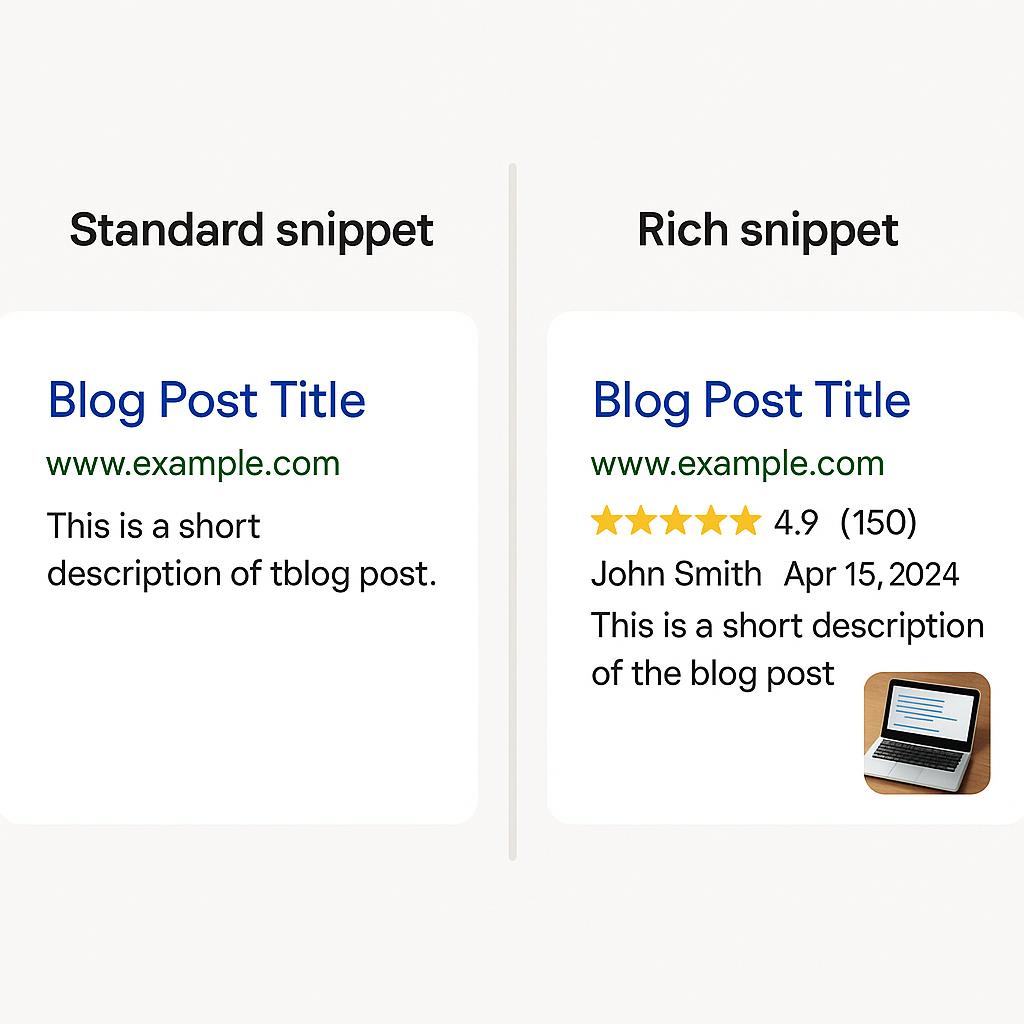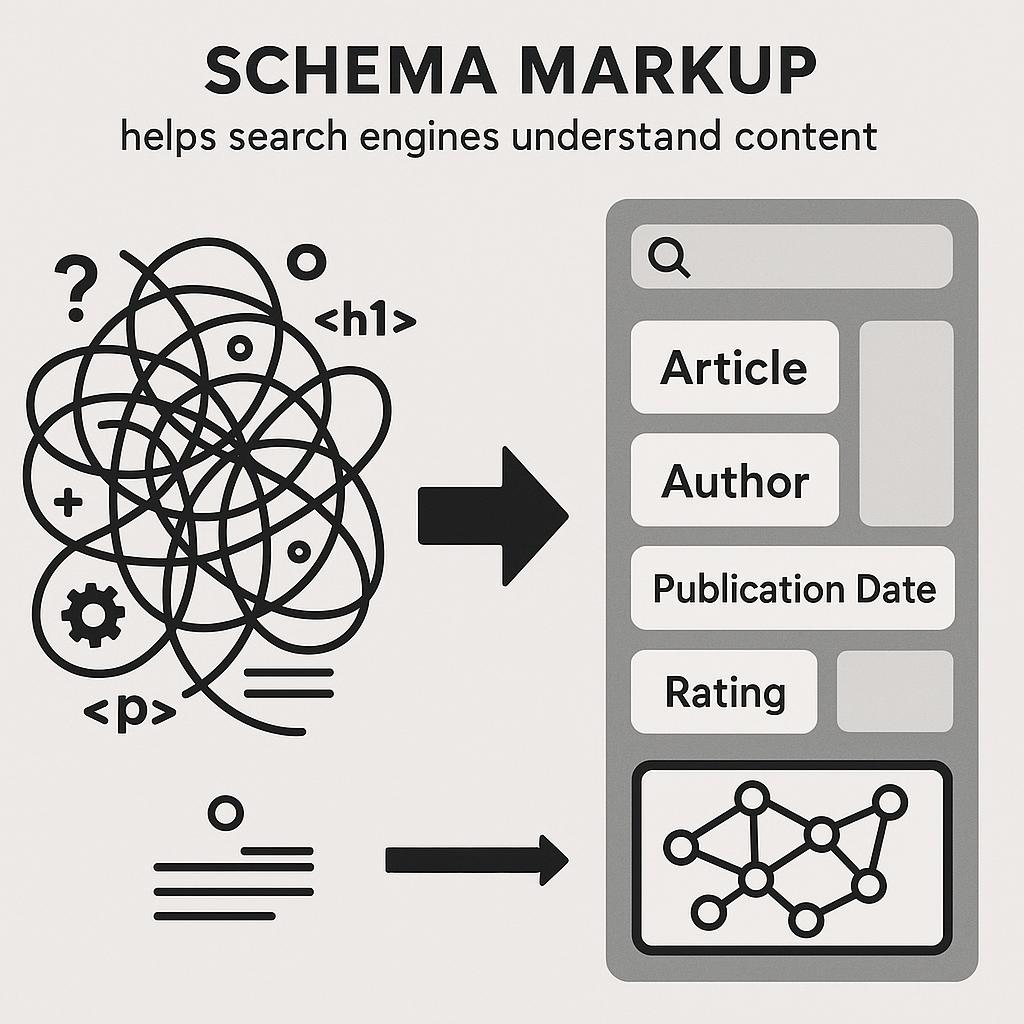Implementing Schema Markup: Your Secret Weapon for Enhanced Blog Visibility
If you're an ambitious founder, indie maker, or startup entrepreneur, you're probably working hard to get your SaaS or product noticed. You pour your heart into building something incredible, but sometimes, getting your blog content seen by the right people feels like shouting into an empty room.
You need to grow visibility quickly and drive organic traffic. You also need to establish credibility, all without a huge marketing budget or endless hours crafting complex content.
This is exactly where Schema Markup really shines as your ally. It's a powerful tool that can significantly improve how search engines understand and display your blog posts, leading to a substantial boost in your organic traffic.
Your blog posts won't just appear in search results. They can practically shout, "Look at me! I have exactly what you need!" That's the sheer power of schema. It gives your content a distinct edge, making it truly stand out in the deluge of online information.
What is Schema Markup, Really?
Consider Schema Markup, often called structured data, as a special language you use to chat directly with search engines. It's like a specific vocabulary, a collection of standardized tags and attributes you can embed in your website's HTML. This helps search engines such as Google, Bing, and Yahoo grasp the context of your content much more accurately. Instead of just plain text, they actually discern specific entities, relationships, and facts about your page.
For example, when you craft a blog post, a search engine might recognize it's about "AI writing tools." However, with schema markup, you can tell it: "This is an Article concerning AI writing tools, penned by [Your Name/Company Name] on [Date Published], boasting an average rating of 4.9 stars from 150 reviews."
It's essentially handing your content an incredibly detailed resume. This makes it remarkably simple for search engines to categorize and present your information for maximum effect. As SchemaApp points out, structured data truly helps search engines get a clearer handle on your content. That's absolutely crucial for discoverability.
Why Should You Care About Schema Markup for Your Blog?
For founders and lean teams, every scrap of visibility truly matters. Schema Markup isn't just some technical detail; it's a straight shot to more traffic. Here's exactly why:
Rich Snippets and Enhanced Search Presence
Have you ever spotted those search results that really catch your eye? They often feature star ratings, images, publication dates, or even direct answers to your questions. These are known as rich snippets or rich results. They're a direct benefit of employing schema markup. Instead of just a plain blue link and a brief description, your content enjoys a visually enhanced presence right there in the search results.
For example, your blog post on "SaaS marketing strategies" might show up with a star rating and an estimated reading time. Meanwhile, your competitor's post is just plain text. Which one are users more inclined to click? The answer is pretty clear. As SEOClarity highlights, schema builds a much more robust search presence, making your listings considerably more appealing.

Skyrocketing Click Through Rates (CTR)
This improved visibility directly leads to higher Click Through Rates (CTR). When your search listing truly stands out with those rich snippets, it naturally grabs more eyeballs. Users tend to view these results as more authoritative and relevant. This often encourages them to click on your link instead of others, even if you're not at the very top. A higher CTR tells search engines your content is highly relevant and valuable. This, in turn, can further boost your search rankings over time.
SchemaApp explicitly states that structured data can result in higher CTR. We're talking about increases that often land between 20 to 30%. This happens purely because your listing becomes more appealing and informative. For a startup, this translates directly into more visitors, more potential leads, and a substantial boost to your organic growth, all without shelling out extra cash on ads.
Improved Search Engine Understanding
Schema markup isn't just about making things look pretty. It's fundamentally about deep understanding. By giving search engines clear signals about your content, you help them accurately interpret its meaning and relevance. With this clearer grasp, your content stands a far better chance of being matched with precisely the right user queries. That applies even to those trickier, more nuanced searches. When search engines genuinely grasp your blog post's content, they can deliver it to the ideal audience. This boosts your visibility for relevant searches. It even aids with voice search optimization, as SchemaApp suggests.

Common Schema Types for Blog Posts
While hundreds of schema types exist, a select few are especially suited for blog content:
Article Schema (
ArticleorBlogPosting): This type is absolutely fundamental for blog posts. It lets you specify crucial details like the author, publication date, headline, main image, and the main article content. Specifically,BlogPostingis a more specific form ofArticleschema. It's just right for individual blog posts.FAQ Page Schema (
FAQPage): If your blog post has a Frequently Asked Questions section, deployingFAQPageschema can show these questions and answers right in the search results. This makes your content exceptionally useful and immediately discoverable.How To Schema (
HowTo): For guides or tutorials that walk users through a series of steps,HowToschema can display those steps directly in the search results. This offers immediate value to users and clearly demonstrates your expertise.
Picking the correct schema type really depends on what kind of content you have. More often than not, BlogPosting will be your default choice for regular articles.
How to Implement Schema Markup on Your Blog (Step by Step)
Implementing schema markup might sound dauntingly technical. However, it's actually more manageable than you might initially think. Here’s a simple approach:
Identify Relevant Content: First off, figure out which blog posts stand to benefit most. Consider your foundational or "pillar" content, your most popular articles, or any posts you're aiming to direct more traffic toward.
Choose the Right Schema Type: As we've covered,
BlogPostingis typically ideal for the majority of articles. Should you have a FAQ section or a guide that guides users through each step, then considerFAQPageorHowTo.Generate the Code: The most widely used and recommended format for schema markup is JSON LD (JavaScript Object Notation for Linked Data). This is a snippet of code embedded on your page. The good news? You absolutely don't need to write it from scratch. Numerous online schema generators are available, like Google's Structured Data Markup Helper or various SEO tools. You simply input your content specifics, and it generates the code for you.
Add the Code to Your Blog Post: Once your JSON LD code is ready, you'll generally place it within the
<head>section of your blog post's HTML. Alternatively, sometimes it goes at the very end of the<body>section. Most modern Content Management Systems (CMS) like WordPress come with plugins that simplify this process. Or, you can just manually insert it into your post editor if you have access to the HTML view.Test Your Schema: This part is absolutely crucial! Google offers a free Rich Results Test tool. Just pop in your blog post's URL or the code snippet. The tool will then check your schema markup, identifying any errors and providing a preview of how your rich snippets could look in search results. This way, you ensure all your hard work genuinely pays dividends.
Beyond the Basics: Maximizing Your Schema Strategy
Putting schema into practice isn't a one and done task. It's an ongoing process. To truly maximize its potential, keep these things in mind:
Consistency is Key: Avoid simply adding schema to just a handful of posts. Your goal should be to implement it consistently across all your relevant blog content. The more structured data Google finds on your site, the clearer its comprehension of your overall authority and expertise becomes.
Monitor Performance: Utilize Google Search Console to monitor how your rich results are doing. You can actually see the number of impressions and clicks your rich snippets are generating. This helps you discern what's working well and where adjustments might be needed.
Combine Schema Types: Occasionally, a single blog post can actually benefit from several schema types working in tandem. For example, an article that functions as both a how to guide and includes an FAQ section could potentially leverage
Article,HowTo, andFAQPageschema. This would give search engines even more detailed information.Stay Updated: Search engine algorithms and schema specifications are constantly evolving. Make sure to stay attuned to Google's Webmaster Guidelines and schema.org for any new updates. This helps ensure your markup remains valid and continues to be impactful.
The FeedPal Advantage: Simplifying SEO and Content Creation
As a founder or indie maker, your time is gold. The thought of manually implementing schema, unearthing article ideas, and then crafting SEO optimized blog articles can feel like an insurmountable challenge. This is exactly why tools like FeedPal prove utterly indispensable.
FeedPal serves as an AI writing assistant. It's built to handle the heavy lifting involved in content creation and scheduling. For instance, you could generate SEO optimized blog articles that sound like a human wrote them. This process moves from initial idea right through to publication, all with a single click. FeedPal can genuinely help you to:
- Improve your visibility on search engines by generating content that's inherently structured and optimized for discoverability.
- Write like a human, ensuring your blog posts are engaging and resonate deeply with your audience. This builds crucial credibility.
- Uncover article ideas with high potential, ensuring every piece of content you create targets topics that will propel organic traffic.
FeedPal truly helps you automate and streamline your marketing efforts. It delivers tangible growth while saving you precious time and hard earned money. Essentially, it's about going from a concept to published, SEO optimized articles that consistently drive organic traffic, all without a hitch.
Conclusion
Implementing Schema Markup stands as a potent, yet frequently underutilized, strategy for boosting your blog's visibility and attracting more organic traffic. By giving search engines exceptionally clear information about your content, you unlock the potential for rich snippets that genuinely command attention. You also gain higher click through rates and a far deeper understanding of your valuable information.
For lean startups and driven founders, this translates to greater visibility, more leads, and ultimately, quicker growth without draining your bank account. Don't let your excellent content get lost in the digital din. Start leveraging schema markup today to truly make your blog posts shine. Tools like FeedPal can provide even more leverage, automating the content creation process and ensuring your strategy is always optimized for maximum impact.
